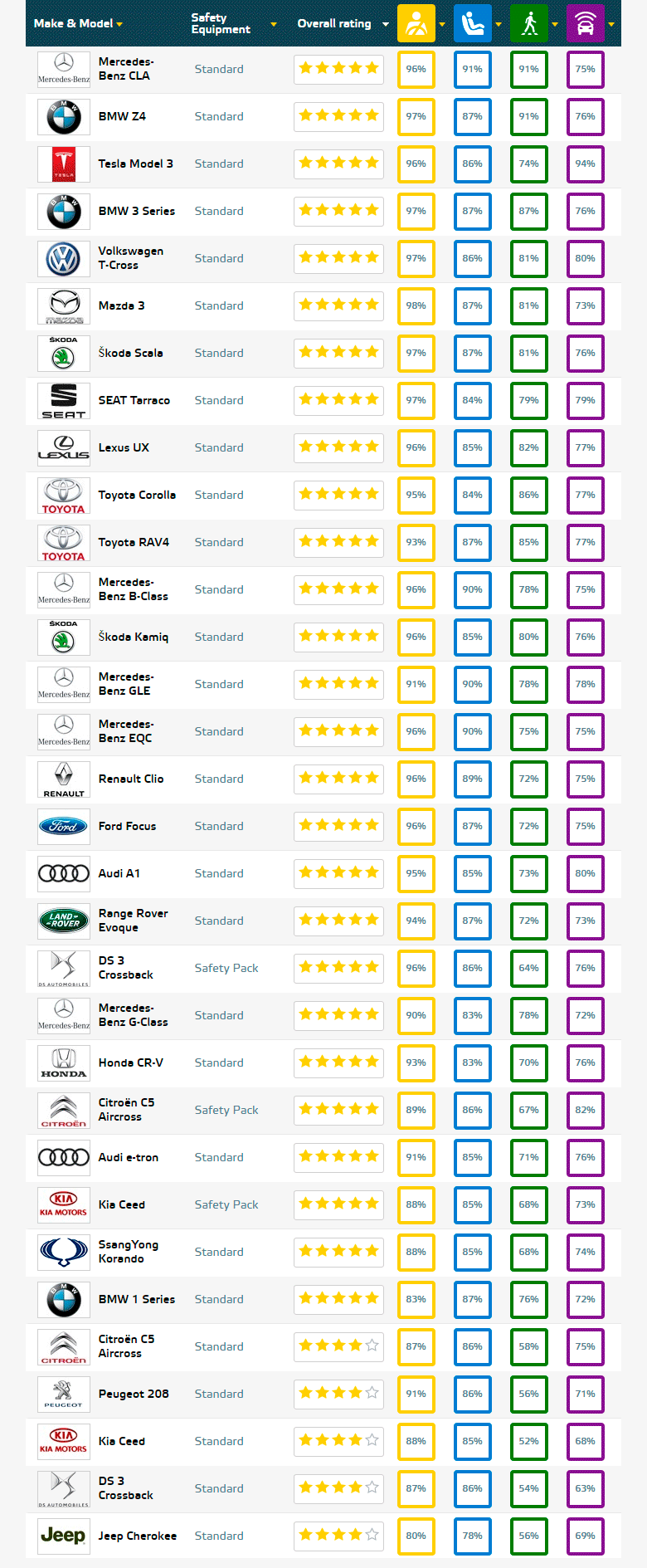
How to Find a Car Safety Rating Online
Content
Before buying a car, it is recommended to check its safety rating. This allows you to better protect yourself and your family in the event of an accident. When checking the vehicle safety rating, you…
Before buying a car, it is recommended to check its safety rating. This allows you to better protect yourself and your family in the event of an accident. When checking the safety rating of vehicles you are about to buy, you have two main options: the Insurance Institute for Highway Safety (IIHS), which is a private organization, and the National Highway Traffic Safety Administration (NHTSA), which is an organization run by US federal government.
Method 1 of 3: Find vehicle ratings on the Insurance Institute for Highway Traffic Safety website.
One resource for finding vehicle safety ratings is the Insurance Institute for Highway Safety (IIHS), a private non-profit organization funded by auto insurance companies and associations. You can access a wealth of safety data for a wide range of vehicle makes, models and years on the IIHS website.
Step 1: Open the IIHS website.: Start by visiting the IIHS website.
Click on the Ratings tab at the top of the page.
From there, you can enter the make and model of the car you want to get a safety rating for.
Step 2: Check the ratings: After you enter the make and model of your car, the car safety rating page will open.
The make, model, and year of the vehicle are listed at the top of the page.
In addition, you can also find a Front Crash Prevention safety rating and a link to any NHTSA vehicle recall.
Step 3: See More Ratings: Scroll down the page to find even more ratings. Among the ratings available:
The front impact test measures the impact force after the vehicle has test-smashed into a fixed barrier at 35 mph.
The side impact test uses a sedan-sized barrier that crashes into the side of a vehicle at 38.5 mph, causing the moving vehicle to break apart. Any damage to the crash test dummies in the front and rear seats is then measured.
The roof strength test measures the strength of a vehicle's roof when the vehicle is on the roof in an accident. During the test, a metal plate is pressed against one side of the vehicle at a slow and constant speed. The goal is to see how much force the car's roof can take before it gets crushed.
The headrest and seat ratings combine two common tests, geometric and dynamic, to arrive at an overall rating. Geometric testing uses rear impact data from the sled to evaluate how well the seats support the torso, neck and head. The dynamic test also uses data from the rear impact test of the sled to measure the impact on the occupant's head and neck.
Functions: Different ratings include G - good, A - acceptable, M - marginal and P - bad. For the most part, you want a "Good" rating in various impact tests, although in some cases, such as the small overlap front test, an "Acceptable" rating is sufficient.
Method 2 of 3: Use the US Government's New Car Assessment Program.
Another resource you can use to look up a vehicle's safety rating is the National Highway Traffic Safety Administration. The NHTSA conducts various crash tests on new vehicles using the New Vehicle Assessment Program and rates them against a 5-star safety rating system.
- Functions: Please note that you cannot compare models after 2011 with models between 1990 and 2010. This is because vehicles from 2011 onwards have been subjected to more stringent testing. Also, even though pre-1990 vehicles had safety ratings, they did not include moderate or small overlap frontal tests. Moderate and small overlap frontal tests account for corner impacts, which are more common than straight lines in frontal impacts.
Step 1: Go to the NHTSA website.: Open the NHTSA website at safercar.gov in your web browser.
Click the "Vehicle Buyers" tab at the top of the page and then "5-Star Safety Ratings" on the left side of the page.
Step 2: Enter the model year of the vehicle.: On the page that opens, select the year of manufacture of the vehicle for which you want to obtain safety ratings.
This page will present two options: "from 1990 to 2010" or "from 2011 to newer".
Step 3: Enter vehicle information: You now have the ability to compare cars by model, class, manufacturer, or safety rating.
If you click on a model, you can further focus your search by car make, model, and year.
Searching by class gives you different types of vehicles, including sedans and station wagons, trucks, vans and SUVs.
When searching by manufacturer, you will be prompted to select a manufacturer from the provided list.
You can also compare cars by safety rating. When using this category, you must enter the make, model, and year of multiple vehicles.
Step 4: Compare Vehicles by Model: When comparing cars by model, your search returns multiple years of the same car model and their safety ratings.
Some safety ratings include overall rating, frontal and side impact ratings, and rollover ratings.
You can also compare different cars on this page by clicking the "Add" button at the end of each car rating row.
Method 3 of 3: Use sites other than NHTSA and IIHS
You can also find vehicle safety ratings and recommendations on sites like Kelley Blue Book and Consumer Reports. These sources receive ratings and recommendations directly from the NHTSA and IIHS, while others create their own safety recommendations and offer them for free or for a fee.
Step 1: Pay SitesA: To find safety ratings on sites like Consumer Reports, you have to pay a fee.
Log in to the site and click on the subscription tab if you are not already a subscriber.
There is a small monthly or annual fee, but it gives you access to all Consumer Reports vehicle safety ratings.
Step 2: Blue Book KellyA: Sites like Kelley Blue Book use NHTSA or IIHS safety ratings.
To find ratings for specific vehicles on the Kelley Blue Book website, hover over the Vehicle Reviews tab and click the link in the Safety and Quality Ratings drop-down menu.
From there, you simply click on the various menus to enter the make, model, and year of the vehicle.
Step 3: Safety Ratings: To find Kelley Blue Book car safety ratings, scroll down the car quality ratings page.
Beneath the vehicle's overall rating is the NHTSA 5-star rating for the specific make, model, and year of the vehicle.
Before looking for a new or used car, protect yourself, as well as your family and friends, by checking out the car safety ratings. This way, if an accident occurs, you will have the best vehicle safety features to protect. In addition to the safety rating, you should also have a pre-purchase vehicle inspection by one of our experienced mechanics on any used vehicles you are interested in to pinpoint any mechanical issues prior to purchasing the vehicle.
